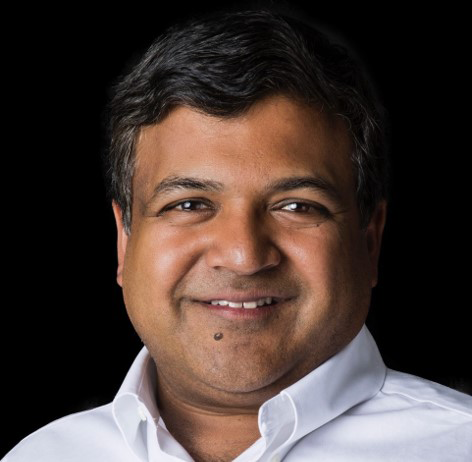A growing number of healthcare organizations are adopting the PCMH model in their primary care settings in an effort to improve quality and reduce costs. At the same time, an increasing number of payers are rewarding practices that implement the PCMH model of care because of the proven link between integrated, accessible, comprehensive care and fewer costly health complications.
What is a Patient-Centered Medical Home?
The patient-centered medical home is a team-based model of care that focuses on patient-centeredness, care coordination, accessibility and quality. In the PCMH model of care, treatment is led at a primary care practice site by a primary care physician, or nurse practitioner or PA, where allowed by the state, who ensures that patients receive the right care at the right time from the right team members, and in a manner that meets their needs and preferences.
The shift from traditional primary care delivery to the PCMH model isn’t necessarily easy, and requires communication between payers, providers and their patients. While there’s no perfect blueprint for navigating the process, I asked two PCMH experts, Rushika Fernandopulle, M.D., Co-Founder and CEO of Iora Health, a venture-backed company focused on healthcare transformation, and Peggy Reineking, former Director of Recognition Program Operations with the National Committee for Quality Assurance (NCQA), which formally recognizes medical homes, about some of the biggest “dos and don’ts” healthcare organizations should keep in mind when implementing the PCMH model.
Dr. Fernandopulle has spent more than a decade involved in efforts to improve care delivery and quality. He was the first Executive Director of the Harvard Interfaculty Program for Health Systems Improvement and served as a Managing Director of the Advisory Board Company. Reineking, served as an NCQA consultant reviewer, a PCMH Certified Content Expert and has 40 years of experience working with organizations on patient care, physician training, clinical research, health benefits administration and quality performance assessment.

Do: Start with a thorough practice analysis.
Reineking: If a practice really wants to transform, it can review a copy of the NCQA recognition standards and guidelines and do a gap analysis to see how it measures up. There are also thousands of individuals across the country who have been through the NCQA process and can help medical practices with the transformation. Examples include NCQA PCMH Certified Content Experts, as well as many national payer, healthcare IT, pharmaceutical and quality organizations that are aligned with NCQA’s PCMH recognition program.

Do: Re-think current systems.
Fernandopulle: As providers, we need to advocate for a new business model that focuses on getting paid for [taking] a team approach to care, and that moves away from only getting paid for billing and coding. I think payers are becoming increasingly open to the idea, but it’s still our responsibility to demand it. In every other business, those who provide a service determine how they will be paid, so I think that, as primary care providers, it behooves us to vocalize this, too.
Do: Prepare and educate your staff.
Fernandopulle: The PCMH is all about team-based patient care, so you need to have a staff that is aligned and committed to adopting a patient-centric, proactive team model. Practice leaders need to support their staff throughout this transition by giving them the right training, tools and resources.
Reineking: Even though transformation still requires time and hard work, it’s much less labor-intensive now to become certified. Recognition programs like NCQA allow practices to demonstrate their efforts toward the PCMH transition in a real-time via Skype sessions rather than needing to prepare and submit dozens of manual reports.
Don’t: Try to implement the model only for a select group of patients.
Fernandopulle: Some organizations may participate in a PCMH demo for a specific payer, so while they’re getting incremental payments for certain patients, they often lose money in other areas. You end up trying to re-engineer your entire practice for just one type of patient, and that doesn’t work.
Do: Blend technology and relationships.
Fernandopulle: Technology is important and can absolutely help a practice with a PCMH transformation, but we also need to think about building an operating system that melds technology and people. Healthcare is an inherently “human” field, and it’s about relationships. When you’re implementing technology that supports the PCMH, you need to continually ask, “How do we get both the technology part and the people part right?”
Do: Call on leadership.
Reineking: NCQA has seen many practices going through this transition that didn’t have support at the top. The executives at these practices wanted PCMH recognition but didn’t give their staff the resources to achieve it. Over the last five to ten years, we’ve learned that it really takes an empowered champion at each site to make this transformation happen.
Fernandopulle: Staff engagement with the PCMH model requires leadership. If you have strong leadership pulling you in the right direction, everything else will fall into place.
Don’t: Neglect the patient perspective.
Fernandopulle: I think in the past, we built a system around the providers’ needs and not necessarily around the needs of the “customer” or patient. It’s not about my priorities as a doctor, it’s about [the patient’s] priorities, which are informed by my knowledge as a doctor, so it’s critical that organizations create open communication channels, and focus on developing a shared understanding with patients about their care.
Don’t: Wait for patients to seek care.
Fernandopulle: You have to stratify your patient population, because a big part of care management involves being proactive, not reactive. Sometimes, a practice will wait for patients to walk in the door, but it’s the people who are not coming in you need to worry about. It’s important to identify those patient groups and know how frequently you need to reach out.
Learn how Phreesia helps healthcare organizations enhance clinical care.





